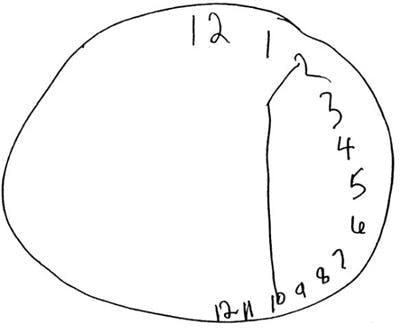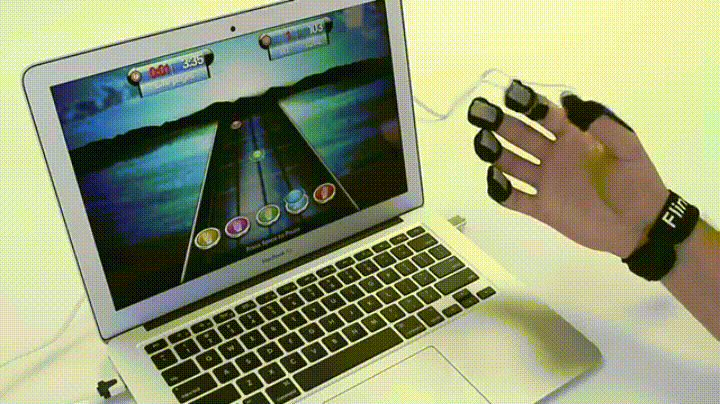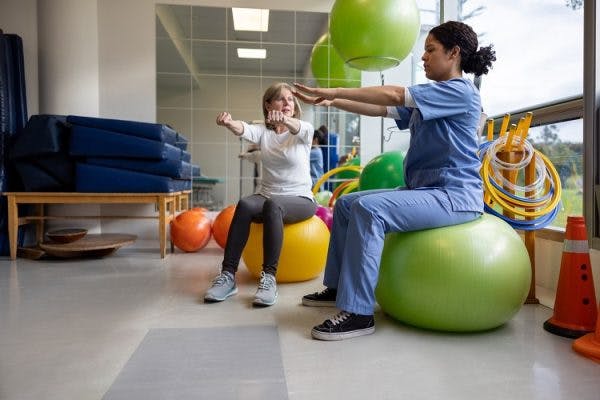Left neglect after stroke is a condition that causes lack of attention and spatial awareness on the left side of the survivor’s environment. When someone with left neglect is approached from their left side, for example, they may not notice or respond to you. This is not because their vision or hearing is impaired. Rather, it’s because the brain has been affected in a way that impairs the survivor’s ability to hold attention on their affected side.
To help you understand this condition, which is formally known as hemineglect, you’re about to learn what causes it and how it is treated. At the end, you’ll find some exercises to help boost awareness on the survivor’s affected side.
Table of contents
Causes of Left Neglect After Stroke
Hemineglect is a condition that impairs attention and spatial awareness on the affected side of a person’s environment. Left side neglect after stroke is much more common than right side neglect. This begs the simple question, why?
To understand why left neglect occurs — and why it occurs more frequently than right neglect — let’s look at the differences between the brain’s two hemispheres and the function of the parietal lobe.
Each hemisphere (side) of the brain controls the opposite side of the body. A stroke in the right hemisphere usually affects the left side of the body and vice versa.
The parietal lobe spans both hemispheres, and plays a strong role in spatial awareness. The right side of the parietal lobe plays an even bigger role in attentional processes. We rely on our right parietal lobe to help us notice the environment on the left side of our body. Therefore, a right-side parietal lobe stroke is likely to result in left-side neglect.
This is one of many reasons why survivors are encouraged to ask their doctor or neurologist for information about the location of their stroke. It can provide insight into potential secondary effects that may occur.
Symptoms of Left Side Neglect After Stroke
The most prominent symptom of left neglect after stroke is difficulty noticing things on the left side of the body and environment. Here are some examples of what left neglect after stroke may look like:
- Bumping into objects on the left side of the body, and difficulty navigating the environment
- Eating only the right side of the plate
- Reading and writing only from the right side of the page
- Putting a shirt only over your right arm
- Ignoring caregivers unintentionally when approached on the left side, and often only turning head to the right
Your therapist may test for left neglect by asking you to fill in the numbers on an empty clock. A stroke survivor with left neglect may only fill in the numbers on the right side like in the image below.

Image from Journal of Neurology
Because survivors do not notice things on the left side of their environment, they may only complete components of their daily tasks that involve their right side. However, left side neglect after stroke should be taken seriously because it can pose a safety risk.
For example, if a survivor is walking across the street, they may not notice cars approaching from the left side. For this reason, it’s important to treat this condition seriously and work with an occupational therapist to create a rehabilitation plan customized to your needs.
We’ve included some left side neglect exercises in this article to help you get started. Before we get there, let’s make a quick distinction between left neglect after stroke and left visual field cuts, because these two conditions can be easily confused.
Hemineglect Is Not a Visual Challenge
A left visual field cut is a vision problem that causes blindness on the left side of the person’s visual field. Below you’ll see an example of what someone with a left visual field cut might see:

Visual field cuts are a vision problem while hemineglect is an attention and spatial awareness problem. However, they can easily be confused because they cause similar symptoms.
For example, a survivor with a left visual field cut may not notice you when approached from the left side but they can still hear you if you say something to get their attention. However, a survivor with left side neglect may not notice you when approached from the left side even if you say something to get their attention.
Due to the similarities in these conditions, it’s important to get a formal diagnosis. An occupational therapist, speech-language pathologist, or neuro-ophthalmologist can help with this. Visual field cuts are treated much differently than hemineglect, and a professional diagnosis is a must.
[Related: How to Tell the Difference Between Left Visual Field Cuts vs Left Neglect]
Treatment for Left Side Neglect After Stroke
Now that you understand the causes and symptoms of left neglect after stroke, let’s discuss treatment options. It’s always best to begin treatment alongside a qualified therapist. They can help get you started on the right path and address any related complications that could make treatment more difficult (like left visual field cuts).
Here are some evidence-based methods your therapist may suggest for treating left neglect after stroke:
- Visual scanning training. During this left neglect treatment, you are presented with various stimuli (like letters and symbols) and asked to point out specific ones. Your therapist will encourage you to visually scan to the left to help retrain the brain to improve spatial awareness.
- Prism adaptation. Prism glasses contain special lenses that pull items from the left into the central visual space. This helps stroke patients with left neglect notice more of their environment. It’s a compensation technique that should be paired with other restorative treatments like visual scanning training.
- Limb activation. When the left arm and leg are activated, it stimulates the brain’s right hemisphere spatial and motor control centers. This left neglect treatment method should also be combined with visual scanning training for best results.
- Eye patching. The right eye (or the right fields of both eyes in some cases) can be patched to force more awareness of the left visual environment. This is a type of constraint-induced therapy, which can be difficult to practice without the help of a skilled therapist.
- Sensory stimulation. Stimulating the left side with electrical stimulation may help improve left neglect, although research is limited. However, this treatment is well-studied for motor recovery after stroke, so if you wish to improve movement on the left side while also possibly improving left neglect, electrical stimulation could be worth trying with your therapist. Auditory and tactile stimulation on the left side of the body may also help with left neglect.
- Mental imagery. Visualizing yourself noticing both the left and right side of your environment may help, although more research is needed. However, it’s a non-invasive treatment, so there’s no harm in giving it a shot. This may be difficult for those with severe cases of left neglect, because these survivors typically lack awareness of their condition without significant assistance from therapists and caregivers.
- Trunk rotation. By simply turning your torso to left, you can help train your brain to notice your left side. However, remembering to turn your torso can be difficult.
- Robot-assisted therapy. An emerging treatment option for left neglect is robotic therapy. This utilizes the principles of limb activation therapy, but differs as a robotic device is used to mobilize the left limb. One study involved using a robotic device to help move the left arm while survivors played active computerized games, with the computer’s monitor located on the survivor’s left side.
Of all the treatments for left neglect listed above, visual scanning training and prism adaptation tend to be the most effective – and have the most research behind them.
While seeking treatment with a therapist, it’s a good idea to pursue rehabilitation at home too. This helps keep the brain stimulated and recovery going.
Left Side Neglect Exercises
Practicing visual scanning exercises is a great way to treat left neglect because it trains the brain to pay attention to the left side of the environment. The more you practice intentionally paying attention to your affected side, the better you will get at it because of neuroplasticity.
Neuroplasticity is the mechanism the brain uses to rewire itself and heal after stroke. It occurs when an activity is practiced repetitively. When you practice visual scanning exercises on a consistent basis, the brain responds to the repetitive stimulation by adapting and getting better at the task.
Up next, you’ll find some visual scanning exercises that you can do at home to improve left neglect after stroke.
- Anchoring techniques. Use a highlighter to draw a bright line down the left side of a book, and then practice moving your eyes all the way to the left until you find the highlighter mark. This can ensure that you are seeing/reading from the left-most point to the right. This is a popular occupational therapy treatment activity for left neglect after stroke. It helps to ask a caregiver to draw the line and sit with you to ensure you start reading at the beginning of each line.
- Look both ways. Before you start any activity, make a habit of looking both ways. By turning your head to the left and right, you help train the brain to notice more space. This can be important to continue doing throughout a task as well. Therapists may refer to this exercise as the lighthouse scanning technique, as you should frequently be turning your head from one side to the other like the light of a lighthouse.
- Letter hunting. Print out a word search and hunt for specific letters. The goal is to train your brain to notice letters on the right and left side. If this is too difficult, ask a caregiver to mark each letter with a highlighter and then tell you how many there are. Then, you can keep looking until you know you’ve found them all.
- iSpy. Go on a walk with a caregiver and play a game of iSpy. Ask your caregiver to specifically find things on your left side. Your job is to find the object and point to it. If it’s too cold or rainy out, you can also try doing this indoors.
- Mazes. Print out some mazes and try your best to complete them. Turn your head to the left when you get stuck to notice more paths.
- Mix up your routine. Ask a caregiver to strategically place things on your left side throughout your daily routine. For example, have them place your clothes on the left side of the dresser, or place your silverware on the left side of the plate. If this is too frustrating in the beginning, start with smaller tasks, like placing your toothbrush on the left side of the sink. Also, ask family members and caregivers to approach and interact with you primarily on your left side. An easy way to integrate this into your daily routine is to ensure the person you converse with most at the dinner table is seated on your left.
You can get creative with left neglect exercises, especially if you’re currently working with an occupational therapist. Ask your OT to send you home with some exercises to try, and get your family involved.
Success Story: How Others Are Improving Left Neglect Through Visual Scanning Exercises
At Flint Rehab, we had the pleasure of hearing success stories from survivors who improved left neglect through visual scanning unintentionally. It happened because visual scanning is required to use our music-based hand therapy device, MusicGlove.
During MusicGlove hand therapy, notes scroll down the screen and the user must make therapeutic hand movements in sync with the music. Because this requires visual scanning of the screen, it helped at least two survivors improve left neglect after stroke.
Here are their stories:
“My husband’s stroke was 2.5 years ago. He has come a long way with FitMi and MusicGlove! His fine motor skills have improved tremendously! The program has 3 balls coming down 3 paths. Jerry has left neglect but this program has even helped this deficit because he has to look left to see the leftmost ball and path. So glad I found Flint Rehab!”
— Monica
“My husband had a stroke in November that left him with severe left neglect. The MusicGlove has been a wonderful option to help him learn to remember to “look left”, and to use his left hand which was also affected. He is having to relearn the use of his hand and the glove is a fabulous tool for that! I even enjoy using it!”
— Christine
While MusicGlove is designed to improve hand function, it’s great to see that it’s helping with left neglect, too. Not only does this provide hope for recovery, but it validates the effectiveness of visual scanning as a helpful treatment for left neglect after stroke.
Overcoming Left Neglect After Stroke
Visual scanning training is one of the most effective treatments available for left neglect, and the good news is that you can do it from the comfort of home. If you find it too difficult, then work with your occupational therapist or speech-language pathologist to get started.
It’s important to keep your medical team involved because left neglect can be mistaken for other conditions like left visual field cuts. We hope this article provided the insight you need to overcome left neglect after stroke.











